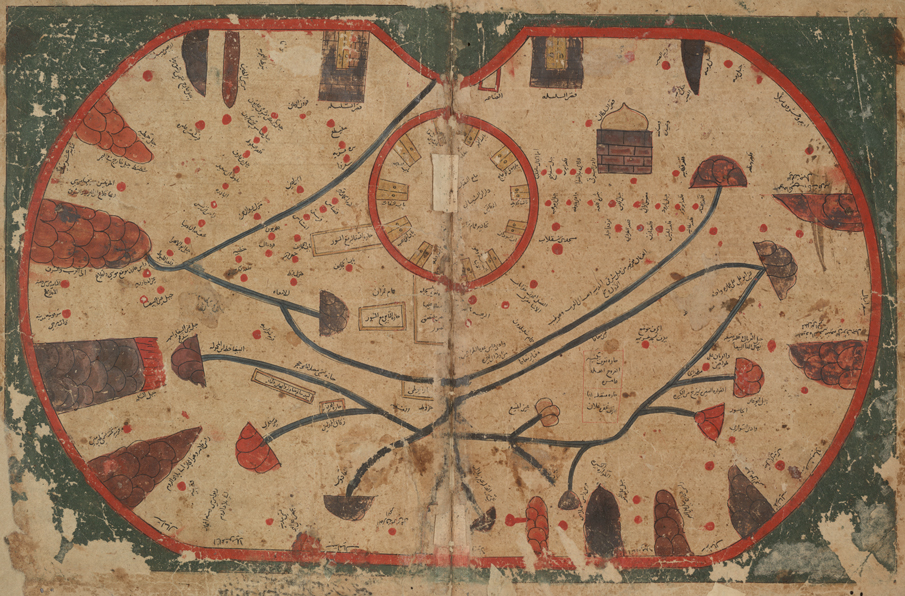About the Project

Book of Curiosities (MS Arab. c. 90). Copyright Bodleian Library.
The study of the history of cartography in Europe and the Islamic world has proceeded to date on parallel lines. Yet while scholars have tended to specialise in one or the other tradition, relations of exchange and influence between Islamic and European cartography have consistently been asserted. At the same time, institutional and linguistic barriers to comparative study have impeded systematic examination of the connections between Islamic and western mapmaking.
The Leverhulme Network ‘Cartography between Europe and the Islamic World, 1100–1600’ aims to overcome these difficulties and to promote comparative, cross-disciplinary scholarship on Islamic and European cartography by bringing together experts in these two fields. Our network’s investigations extend from the entry of certain key works of Arab learning to Europe in the twelfth century to the Age of Discoveries, both periods of demonstrable intellectual interaction between Europe and the Islamic world. Within this time frame, it is already possible to identify particular places and moments of contact between traditions: twelfth-century Spain; the court of Roger II of Sicily; Spanish, Italian and Maghribi portolan maps; fourteenth- and fifteenth-century Italian cartography; Piri Reis and post-Columban cartography of the early sixteenth century. However, it is likely that several more points of contact will emerge as a result of dialogue between scholars of Islamic and European traditions.
At the same time it must be emphasised that the network is equally committed to the identification and discussion of significant differences, where they exist, between European and Islamic cartographic traditions. The intention is as much as possible to work without a priori assumptions about the network’s findings. It may be that influence between cultures turns out to have been minimal, but if so this need not be seen as a disappointing result: difference, as well as influence and exchange, requires explanation.


